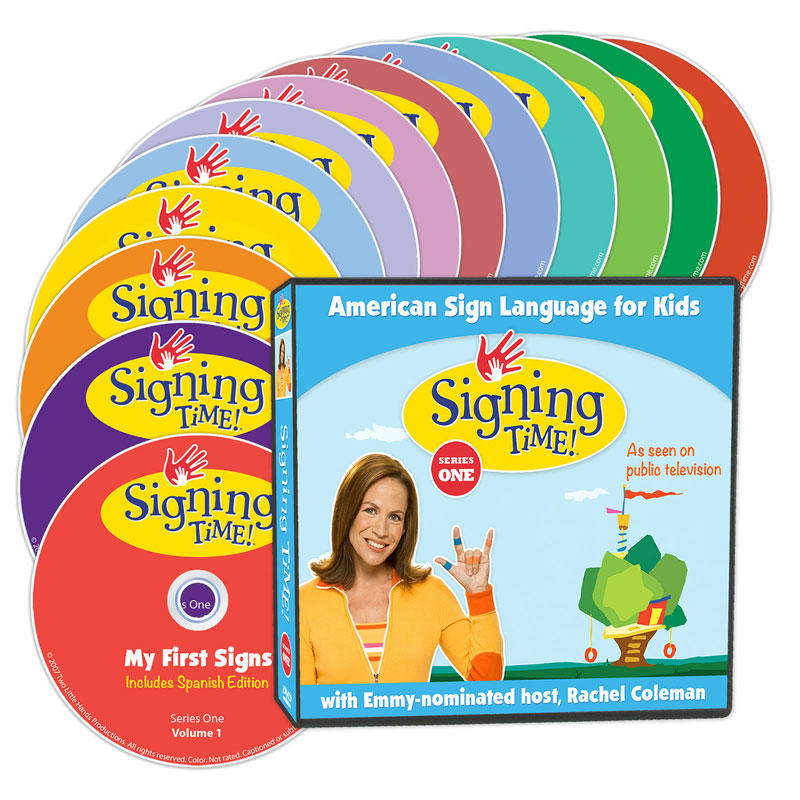Sign language is the most human of all languages; it touches the soul.
George Veditz
You’ve probably seen or heard of American Sign Language (ASL) before, and it must’ve piqued your curiosity. What is ASL? ASL is the primary language used by Deaf and hard-of-hearing people in North America and beyond to communicate in their everyday lives. It’s a fully developed language that uses hand signs, facial expressions and movements to communicate. Is it hard to learn? Not at all! While it may seem tricky at first, ASL is surprisingly easy to pick up with the right approach and resources.
Key Takeaways 📌
- What is ASL? American Sign Language (ASL) is a visual language that uses hand signs, facial expressions and body movements to help Deaf and hard-of-hearing people communicate.
- Why Learn ASL? Learning ASL improves communication, connects you with the Deaf community and offers many other benefits.
- Benefits: ASL keeps your brain active, improves mental health and helps you connect with others!
- How to Start? Take ASL classes, use online resources or join practice groups!

Is Learning ASL Hard?
Learning American Sign Language (ASL) may seem challenging at first, but it’s easier than you think with consistent practice and the right resources! Like any new skill, it requires patience. However, the rewards are well worth the effort! Knowing ASL allows you to connect directly with Deaf and hard-of-hearing individuals, helping you communicate without barriers.
More than 3 million Americans are deaf or hard of hearing, with many more experiencing hearing loss. Communication can be challenging for these individuals in daily life. To address this, experts developed a system, ASL, for effective communication over 200 years ago.
It’s also a valuable way to encourage inclusivity and build stronger communities in the US. ASL is a visual language, which can actually make it more intuitive and fun to learn. While being fluent takes time, basic conversational skills are achievable for anyone willing to try!
Did you know that there are different variants of sign language ?
How Can You Learn Sign Language?
Learning American Sign Language (ASL) is easier than ever with a variety of resources tailored to different learning styles. Here are some great options to get you started!
Books
Books are an excellent resource for learning the basics of ASL. Titles like “Signing Naturally” and “The American Sign Language Phrase Book” provide clear illustrations, step-by-step instructions and essential vocabulary to build your foundation.
Additional books include:
- Learn ASL for Adult Beginners
- Learn American Sign Language
- American Sign Language Phrase Book
- The Unlearning Curve: Learning to Learn American Sign Language
- ASL at Work: Student Text
- Sign Language: My First 100 Words
DVDs and Online Videos
DVDs and video courses allow you to see the signs in motion, making it easier to understand their flow and execution. Many online platforms, such as YouTube, offer free tutorials from experienced signers and ASL teachers, perfect for beginners. These self-taught methods are very handy nowadays!

Here are a few examples of DVD and online videos on ASL learning!
SigningTime DVD Series
A great option for beginners, offering clear step-by-step lessons to help you learn basic signs and conversations.

Signing Time DVD Series is a fun and engaging resource designed to teach ASL to children and families. With colorful visuals, catchy songs and clear demonstrations, it’s perfect for making learning sign language enjoyable for all ages.
Bill Vicars’ ASL Lessons on YouTube
A favorite among students, this free series by an experienced ASL teacher makes it easy to follow along at your own pace! Here is lesson #1 on his YouTube chain!
ASLDeafined Online Videos
Perfect for students of all levels, these videos focus on practical, real-life signing in a fun and interactive way. Here is an information video on ASLDeafined!
University Classes
Many universities and community colleges offer ASL courses with certified instructors· These classes provide structured learning, opportunities for immersion, and a chance to practice with classmates.
Apps
ASL learning apps like SignSchool, The ASL App, and Lingvano offer interactive lessons, quizzes, and practice exercises. These are perfect for learning on the go! Here is a YouTube video on the best apps in ASL learning!
Private Tutoring
Tutoring is one of the most effective ways to learn American Sign Language (ASL). Why? Tutoring offers a personalized approach tailored to the student's needs. Online platforms like Superprof connect you with experienced and qualified ASL tutors who provide one-on-one lessons, both online and in person. Tutoring allows you to adapt your lessons to your learning style, pace and objectives! Bonus point: private tutoring is affordable!
The National Institute on Deafness and Other Communication Disorders reports that about 15% of American adults aged 18 and over experience some trouble he2aring. These statistics highlight the widespread prevalence of hearing loss across the country.
A tutor can focus on specific areas where you need the most improvement, such as mastering hand shapes, facial expressions or fluency. Additionally, they can help you stay motivated by providing consistent feedback and encouragement. The flexibility of private tutoring also allows you to fully organize your lessons, making it an ideal option for busy students. For those aiming to pursue careers in fields like interpreting or education, private tutoring offers a direct, efficient path to achieving fluency in ASL.
Immersive Practice
Engage with the Deaf community by attending Deaf events, meetups or practicing with friends. Immersion is the best way to gain confidence and fluency in ASL!

By combining these resources you’ll be well on your way to mastering American Sign Language!

Benefits of Learning Sign Language
What are some of the prominent benefits of learning sign language? Not only does it help connect and better understand with the Deaf and hard-of-hearing community, but it also enhances cognitive abilities such as memory and multitasking. Additionally, learning sign language opens the door to new social and professional opportunities!
Sign Language Helps in Improving Your Mental Health
There’s nothing wrong with treating yourself to a vacation away from technology and screen time, but a great alternative is learning sign language if you can’t do that regularly.

When we’re bored and don’t have much to do, many of us gravitate toward phones or computers as an easy distraction to pass the time. Many people spend so much time staring at screens that some studies show it may be altering our brains!
So, learning a new skill like sign language will help you with your mental health in general because it gives you something else to focus on for a change.
Sign Language Is Used by Deaf People Across the World
If you want to connect with others who are deaf, sign language will help you reach them. Deaf communities create sign languages; they aren’t based on spoken languages like English or Spanish. Besides, multiple sign languages worldwide differ depending on where they developed and how they’ve evolved.
Sign Language Opens Up More Career Opportunities
A sign language certification can open up job opportunities that otherwise wouldn’t exist for those who are deaf or hard of hearing. For example, someone could become a sign language interpreter, working directly with clients in healthcare settings and other fields.
Sign Language Helps Keep Children’s Minds Active
While children learn best through play and interaction with other kids their age, sometimes it isn’t possible to find enough peers nearby to meet their needs. Learning sign language is a way parents can fill that gap, and not just during infancy either. Even older children benefit from ASL early on. It keeps their minds sharp and active while allowing them to enjoy being kids without putting too much pressure on them academically.

Sign Language Helps Children Learn Spoken Language
If you’re raising a child who’s deaf or hard-of-hearing, learning sign language is an excellent way to support their development and encourage them to communicate more with you and others around them. While some children are born deaf, others lose their hearing later in life due to illness or injury; either way, these kids need to have someone they can communicate with easily, so they don’t feel isolated from those around them. Sign language also helps parents keep tabs on what their kids are up to and how they’re feeling. This can be especially helpful if a child doesn’t have much verbal communication ability yet.
Tips for Beginners Who Want to Learn Sign Language
Let’s look at some of the most valuable tips for beginners to learn sign language!
- Don’t try to learn sign language all in one day
- Get a decent dictionary of American Sign Language (ASL)
- Work on memorizing some common phrases and fingerspelling your name and basic greetings
- Start by learning how to sign numbers and days of the week before moving on to more complex topics
- Don’t let anyone tell you that sign language isn’t natural or proper English
- Practice simple universal signs in your daily life
- Be patient with yourself
- Finally, remember that sign language is fun
- Find an online community where you can practice signing with other people who want to learn sign language to help gain fluency
Are You Ready to Master American Sign Language ?
Proficiency in American Sign Language (ASL) is about more than just learning how to communicate. Learning sign language has cognitive benefits and can be successfully used in your everyday life, whether it’s at work or during conversations with family and friends. However, starting from scratch can be difficult, especially if you don’t have an instructor or anyone to regularly practice with.
That’s where Superprof comes in! Our online asl classes are here to help you get started with your ASL learning journey. The first step? Register for one of our online beginner-level lessons! You can learn all of the primary signs you need to start communicating successfully with your peers via our course.






















Hey! My name is Kristin and I am an interpreting student! I noticed one of your captions says, “ASL is an international language that uses signs and gestures with the intention to help differently-abled people communicate. (Source: Unsplash)”. ASL stands for American Sign Language (ASL) and is NOT international. There is however such a thing called International Sign Language (ISL) but that is different from ASL. Same idea as how British Sign Language (BSL) or Auslan (Australian Sign Language) are their own languages.
Hello Kristin, thank you for this message and for taking the time to read the article! It has been duly noted and corrected :).